Samsung 990 EVO Gen 5 SSD Review
It would be fair to say that of all the brands that exist in the SSD consumer and commercial market, few have the recognition and long-running reputation that Samsung has. A mainstay in consumer day-to-day devices, they have also been long-running pioneers in the world of solid-state storage for years now (first truly cutting their teeth in consumer M.2 NVMe SSD storage with the hugely popular Samsung 960). In the previously established PCIe Gen 4 generation of M.2 NVMe SSDs, Samsung (along with WD) in late 2020 were the very first brands to introduce 7GB/s (7000MB/s) performing drives to the market, massively overshadowing competitors such as Seagate and ultimately giving them a huge advantage, one that has been enjoyed for almost 3-4 years. Fast forward to now and the Gen 5 tier of M.2 NVMe SSDs has established itself, and despite hugely confident releases from Phison-equipped drives with Seagate, Sabrent, TeamGroup, and more that have been promising 10, 12, and 14GB/s, Samsung has been oddly silent on the consumer Gen 5 tier… Until now! The release of the Samsung 990 EVO marks the brand’s first release into an almost guaranteed large range of Gen 5 solutions in 2024/2025, but with a rather niche approach to its hardware design choices, a shift of focus on its ideal deployment, and performance numbers that seem comparatively lower to many drives on the market – is the Samsung EVO 990 SSD a rather bizarre first Gen 5 entry by the brand? Let’s review the Samsung 990 EVO SSD, discuss what makes it different from the usual crowd, benchmark it, and ultimately decide if it deserves your money and your data!
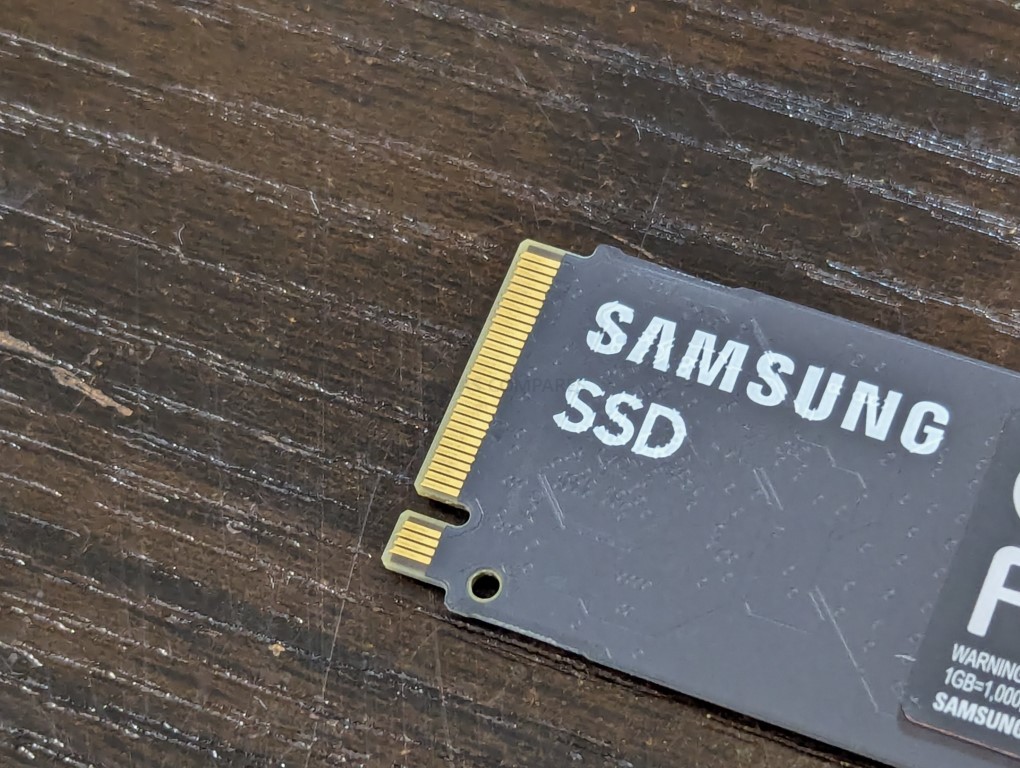
Samsung 990 EVO Gen 5 SSD Review – Quick Conclusion
The Samsung 990 EVO is a unique drive, ideal for systems with limited PCIe allocation and concerns about heat and power usage. While Samsung’s strategy aims to meet future trends, there are questions about PCIe Gen 5 bandwidth utilization and performance sustainability in modern PC architecture. The 990 EVO, being Samsung’s first DRAMless consumer Gen 5 SSD, offers a decent balance of performance and efficiency in compact systems, but its position in the market might be overshadowed by competitors’ higher-spec Gen 5×4 drives. It’s an acceptable choice for those seeking an OS drive or a base SSD for micro/compact systems, offering good durability and power efficiency. However, gamers and power users might find it lacking compared to more robust options available. The Samsung 990 EVO stands out in its niche but faces stiff competition in the broader SSD market.
Where to Buy a Product





![]()
![]()

VISIT RETAILER ➤






![]()
![]()

VISIT RETAILER ➤






![]()
![]()

VISIT RETAILER ➤






![]()
![]()

VISIT RETAILER ➤
 DEAL WATCH – Is It On Offer Right Now? DEAL WATCH – Is It On Offer Right Now?These Offers are Checked Daily
|
Samsung 990 EVO Gen 5 SSD Review – Retail Packaging
The Samsung 990 EVO arrives in fairly standard packaging from the brand and is arguably fairly understated and regular stuff. The drive arrives without any kind of heatsink (more on that later), but comes with the M.2 NVMe SSD in a plastic shell, alongside brief information on installation, the Samsung Magician software, and details on the 5-year inclusive warranty. The retail box itself is adorned with all the usual tech spec information and, although it’s all a bit ‘meh’, at the very least still carries that Samsung charm.
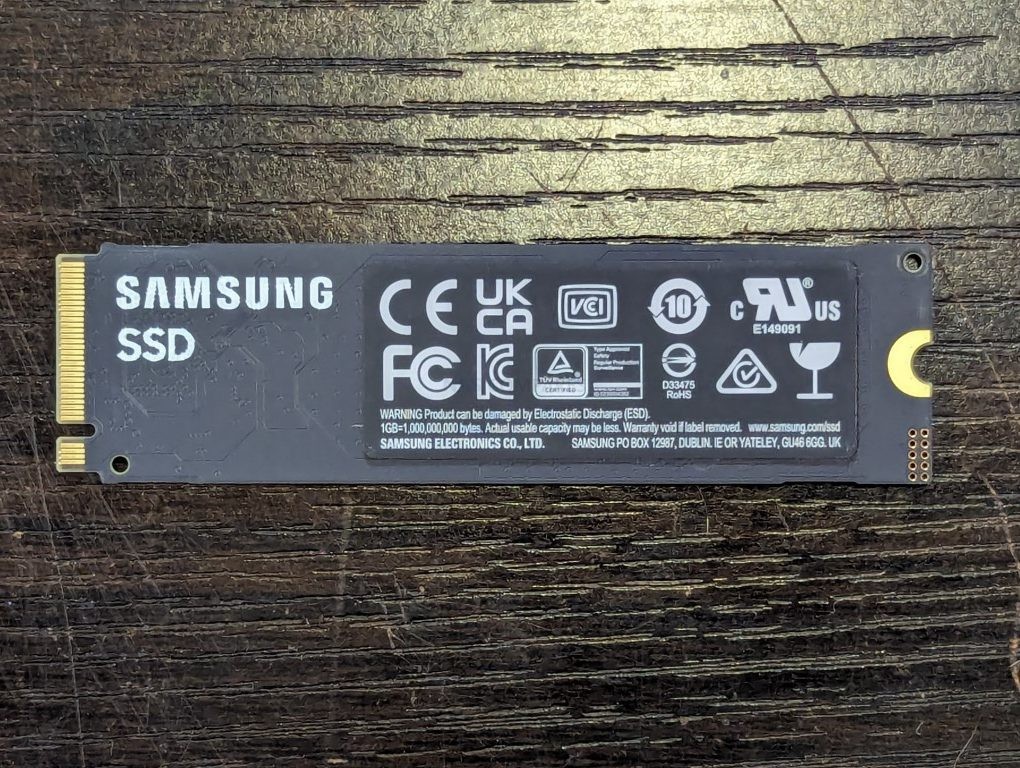
The drive arrives with a base panel heatshield that arrives pre-applied on the base panel of the SSD (on the bare PCB side), and it is located under the storage NAND. It’s a little odd that this isn’t located on the top, but I am sure Samsung has done enough R&D to know this makes more sense.
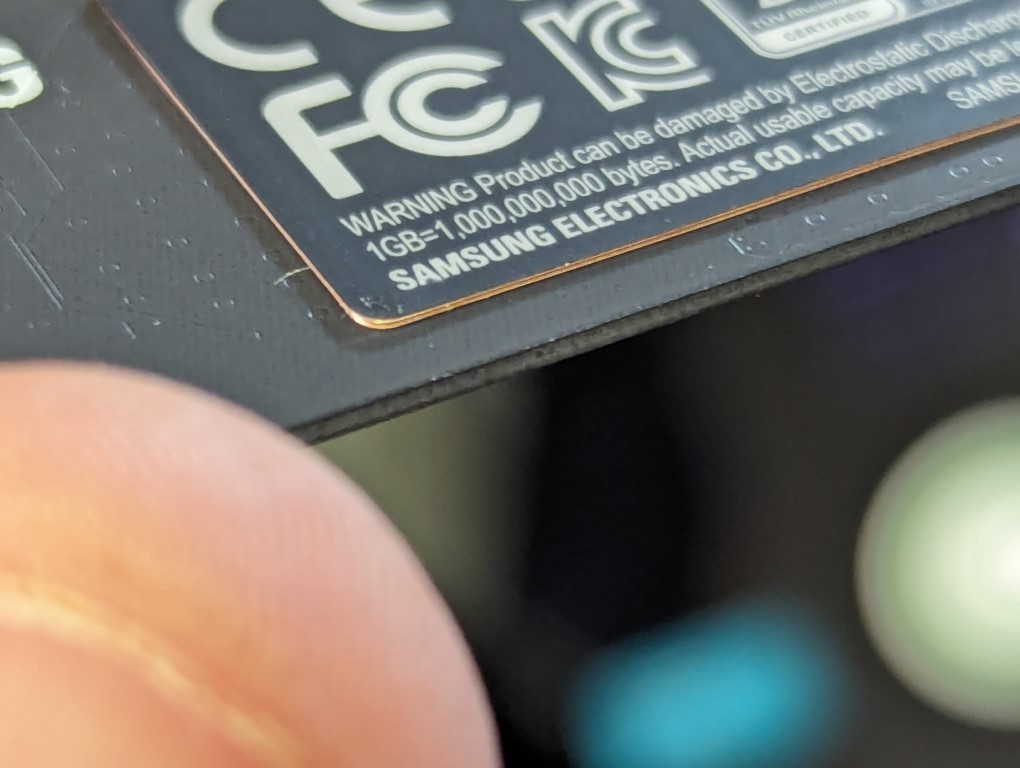
The top of the drive has a simple adhesive label with all the relevant drive information, but this is not any kind of metallic heatshield.
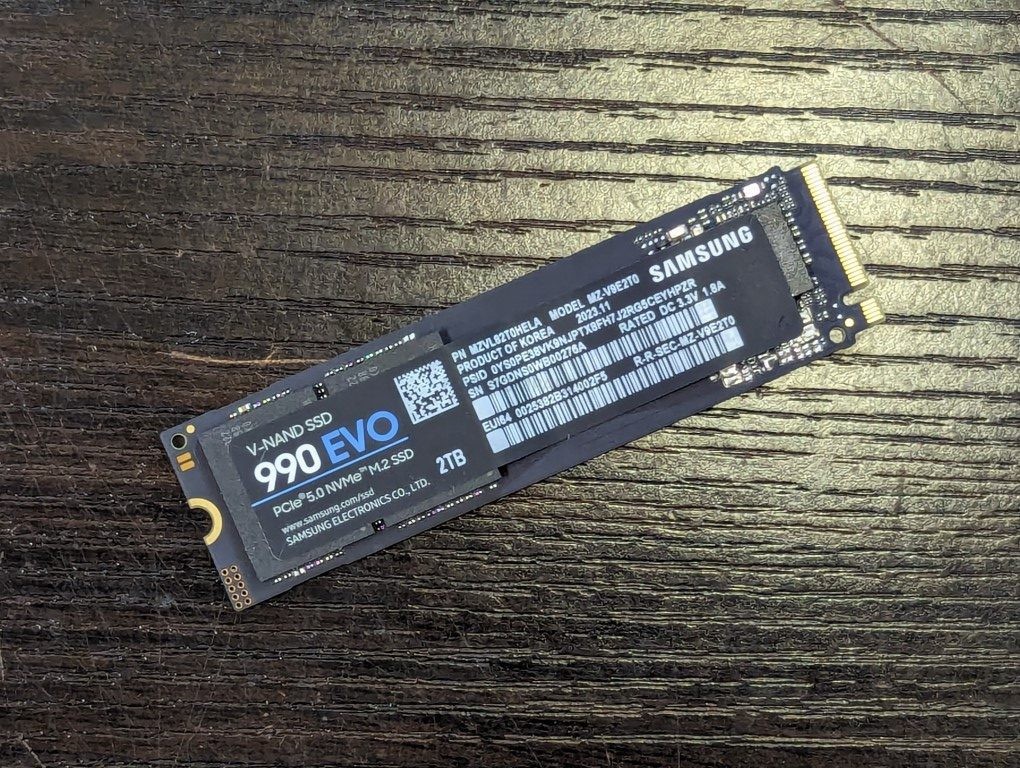
Peeling this back reveals an unusual arrangement of components on the PCB (on both the 1TB and 2TB version), at least compared with the bulk of both Gen4 and Gen5 SSDs in the market. Let’s discuss the hardware that the Samsung 990 EVO runs on.

Samsung 990 EVO Gen 5 SSD Review – Hardware Design
As mentioned above, the Samsung 990 EVO is a different kind of drive in the market. But this is especially unusual when you see that Samsung is attempting to straddle both the Gen4 and Gen5 market with this drive. Advertised as a Gen 5 M.2 NVMe, its architecture and the bandwidth afforded to it are very unconventional (at least by 2023/2024 Gen5 standards, but this could change in the near future – something Samsung is likely banking on with this drive).
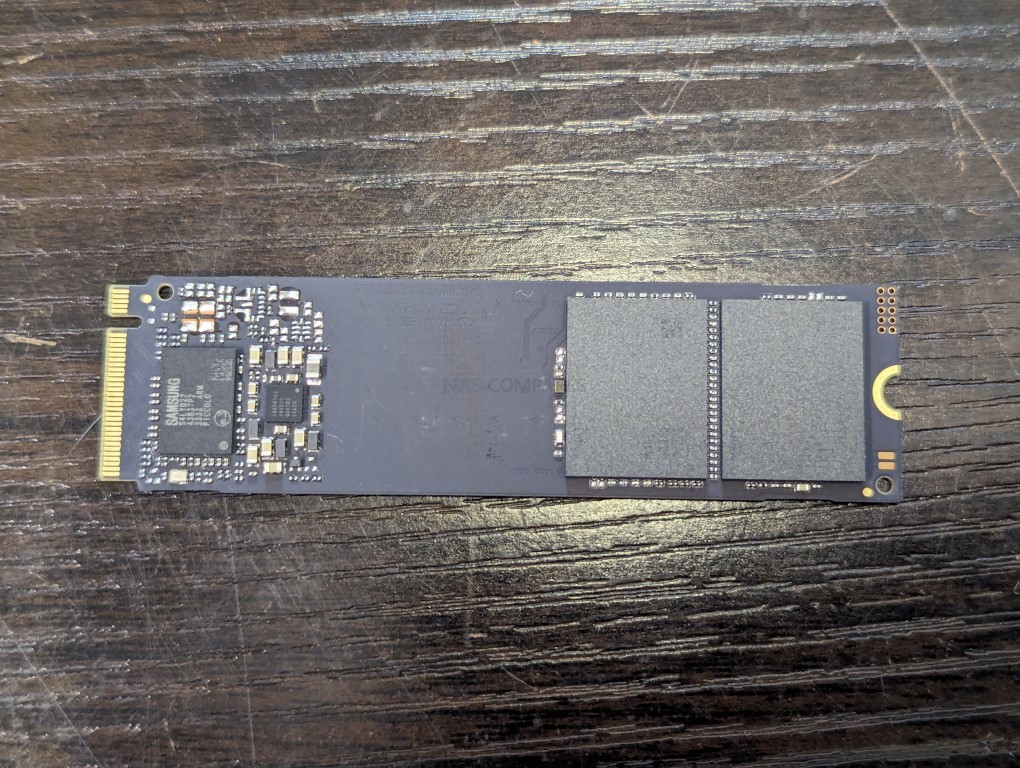
The 1TB and 2TB versions of the Samsung 990 EVO are largely the same (barring the capacity, of course) and are built using all ‘in-house’ proprietary components – much like most other Samsung SSDs. Much like one of their biggest SSD rivals, Western Digital, Samsung likes to keep the development and onboard parts limited to 1st party design (or at the very least using subsidiaries). This can often mean that Samsung runs its own race when it comes to rolling out consumer and commercial storage drives – as they cannot overly rely on the likes of Phison for an SSD controller, MICRON for storage NAND, or SK Hynix for DRAM. The Samsung 990 EVO continues this trend, arriving with the following specs:
| Category | Specification |
|---|---|
| Model | Samsung SSD 990 EVO |
| Usage Application | Client PCs |
| Interface | PCIe® 4.0 x4 / 5.0 x2 NVMe™ 2.0 |
| Capacity | 1TB, 2TB |
| Controller | Samsung in-house Controller |
| NAND Flash Memory | Samsung V-NAND TLC |
| Cache Memory | HMB (Host Memory Buffer) |
| Dimension | Max 80.15 x Max 22.15 x Max 2.38 (mm) |
| Form Factor | M.2 (2280) |
| Sequential Read | Up to 5,000MB/s |
| Sequential Write | Up to 4,200MB/s |
| Random Read | QD1: 20KIOPS, QD32: 680KIOPS (1TB), 700KIOPS (2TB) |
| Random Write | QD1: 90KIOPS, QD32: 800KIOPS |
| Power Consumption | Active: Read 4.9W (1TB), 6.1W (2TB); Write 4.5W (1TB), 5.5W (2TB) |
| Idle Power | PS3 (APST on) 60mW, PS4 (L1.2) 5mW |
| Operating Temp. | 0°C to 70°C (Proper airflow recommended) |
| Non-Operating Temp. | -40°C to 85°C |
| Humidity | 5% to 95% non-condensing |
| Shock Resistance | Non-Operating: 1,500G (Gravity), duration: 0.5ms, 3 axis |
| Vibration Resistance | Non-Operating: 20~2,000Hz, 20G |
| MTBF | 1.5 million hours |
| Warranty | 5 years limited, TBW: 600TB (1TB), 1,200TB (2TB) |
| Supporting Features | TRIM, Garbage Collection, S.M.A.R.T |
| Data Security | AES 256-bit Full Disk Encryption, TCG/Opal V2.0, Encrypted Drive (IEEE1667) |
The controller and its management of the bandwidth with other components is actually quite a unique one in the current Gen 5 market, as it is able to negotiate between Gen 5×2 bandwidth and Gen 4×4 bandwidth. Although auto-negotiation is something that has always existed in SSDs (thanks to PCIe architecture scaled down into PCIe Gen 5>4>3>2, etc.). However, this is something a little different and something that has been developed in order to respond to rising needs in more streamlined systems, PCIe cards, and developing SoC CPUs that have fewer lanes afforded to them (as well as lower power consumption thresholds and temperature limits).
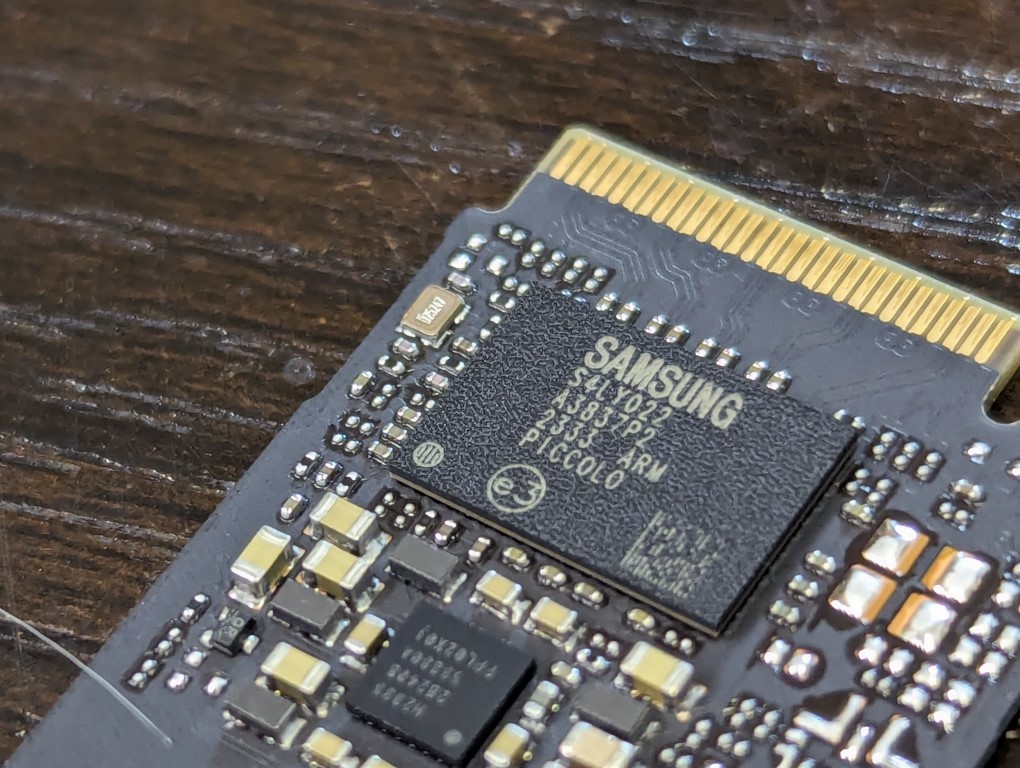
Normally, if you were to put a Gen 5 SSD into a Gen 4 system, the SSD would downgrade to PCIe Gen 4×4, which is exactly what this drive does. But what about the reverse? With newer compact systems arriving with 5×2 bandwidth allocated to storage (as these mini newer Intel Core SoC PC systems, portable ultrathin laptops, and even RAID storage cards with multiple NVMe have begun to do), a PCIe Gen 4×4 SSD that is installed inside would be downgraded to PCIe Gen 4×2. Whereas a Gen 5×4 SSD would be able to use the full Gen 5×2 bandwidth. Ultimately, Samsung is clearly hoping to provide a single affordable drive in their EVO (i.e., affordable/value) series that is able to facilitate both the Gen 4 and Gen 5 compact systems, or those with more careful or curated PCIe lane allocation.
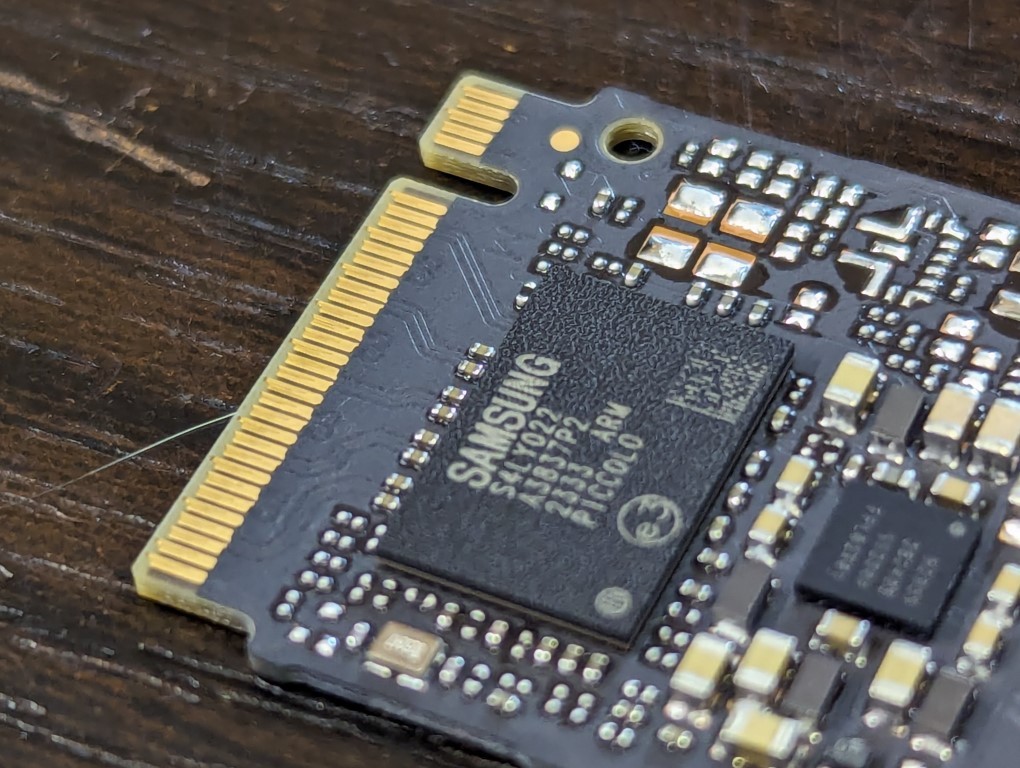
However, realistically, more current PC builders, gamers, and storage enthusiasts are going to question the widespread allocation of Gen 5×2 at the manufacturer level. There is certainly an argument to be made that 2023/2024 released mini PCs (i.e., Intel NUCs and their budget clones), NAS server systems, M.2 storage upgrade cards, and even pre-attached SoC motherboards (see Topton, Erying, and similar) are going to lead to more appearances of x1 and x2 speed M.2 slots.

However, there are very few Gen 5 examples in the market right now compared with Gen 4 and in those systems, the 5×2/4×4 Samsung 990 EVO will be of little benefit in bandwidth over other SSDs in the market. However, the PCIe bandwidth allocation and speed is not the only area in which Samsung has clearly decided is an area ripe for efficient redesign in storage.

The Samsung 990 EVO is also a DRAMless SSD. This means it is a drive that does not arrive with any onboard memory, instead relying on a client memory use system known as HMB – Host Memory Buffer. HMB means that the SSD will need to reserve a small area of RAM on the client machine it is installed inside. So, is this a good thing or a bad thing? DRAMless SSDs, which operate without a dedicated DRAM cache, offer several benefits. DRAMless SSDs, operating without a dedicated DRAM cache, present a unique set of benefits. Their primary advantage lies in cost-effectiveness, as the absence of DRAM chips leads to lower manufacturing costs, making these drives more affordable for consumers seeking SSD speeds on a budget. They are also more energy-efficient than their DRAM-equipped counterparts, consuming less power, which is especially beneficial in battery-powered devices like laptops and mobile phones, thereby extending battery life. The design of DRAMless SSDs is another plus; the elimination of DRAM chips allows for a more compact and streamlined form, ideal for space-constrained devices like ultra-thin laptops. These SSDs tend to be simpler and potentially more reliable due to fewer components, reducing the complexity of the drive’s architecture and possibly leading to fewer points of failure. Additionally, the lack of a DRAM cache can enhance data security, as there’s less risk of data being recovered from temporary storage after power loss. DRAMless SSDs are particularly suitable for read-intensive applications and basic tasks, where high write performance is not a priority.

However, DRAMless SSDs also have notable drawbacks, especially when compared to DRAM-equipped SSDs. The most significant downside is reduced performance, particularly in write speeds and handling large or intensive workloads, due to the reliance on slower NAND flash memory without a DRAM buffer. This limitation affects multitasking capabilities, as they lack a high-speed buffer for quick data access and organization. Some DRAMless SSDs compensate for the absence of onboard DRAM by using a portion of the system’s RAM (Host Memory Buffer), which can affect overall system performance, especially in systems with limited RAM. These SSDs may also have lower endurance due to continuous direct-to-NAND write operations, leading to faster wear of memory cells. Users might experience slower random access speeds and noticeable performance degradation over time as the SSD fills up and managing the mapping table becomes more complex. Consequently, DRAMless SSDs are not ideal for heavy workloads like video editing or gaming, where high-performance storage is crucial, making them a less suitable choice for users with demanding data needs.
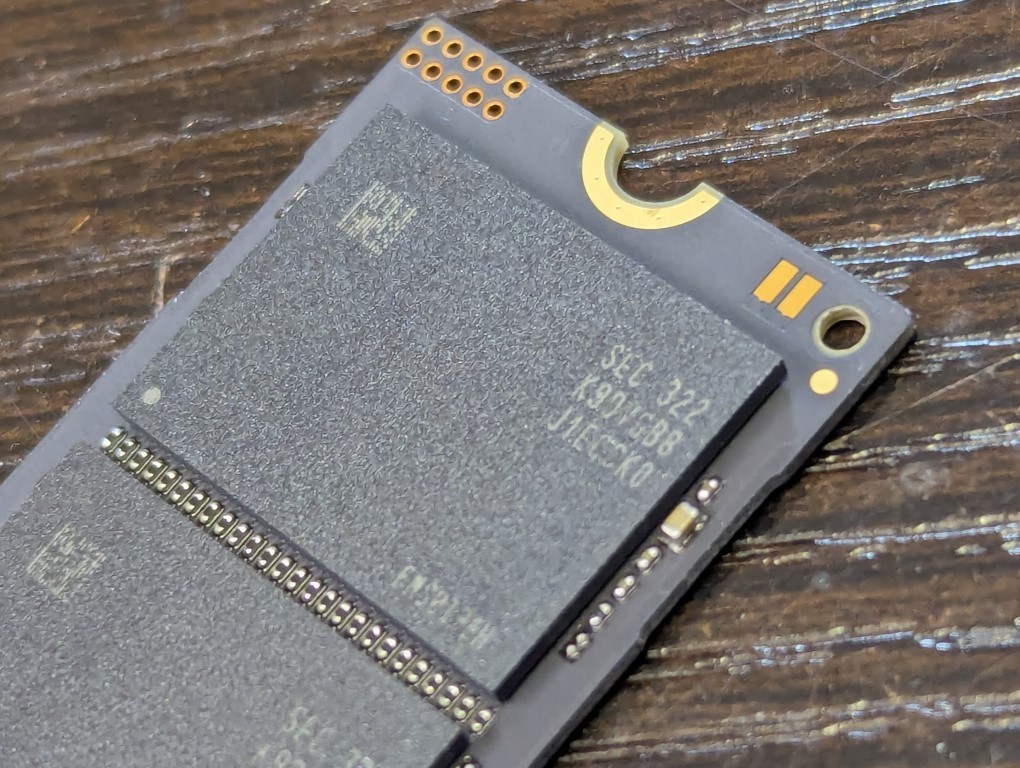
While DRAMless SSDs offer benefits in terms of cost and power consumption, they are generally less suited for high-performance or heavy workload applications, making them more appropriate for budget-conscious consumers with moderate storage needs. Needless to say, Samsung has been quite clear about the performance and ideal deployment of the 990 EVO, with power efficiency and temperature management being crucial considerations. Therefore, HMB and a DRAMless design make a modicum of sense here – it just also means that Samsung’s first consumer Gen 5 SSD looks rather underwhelming in terms of traditional performance in comparison to existing Gen 4 and Gen 5 SSDs in the market right now.
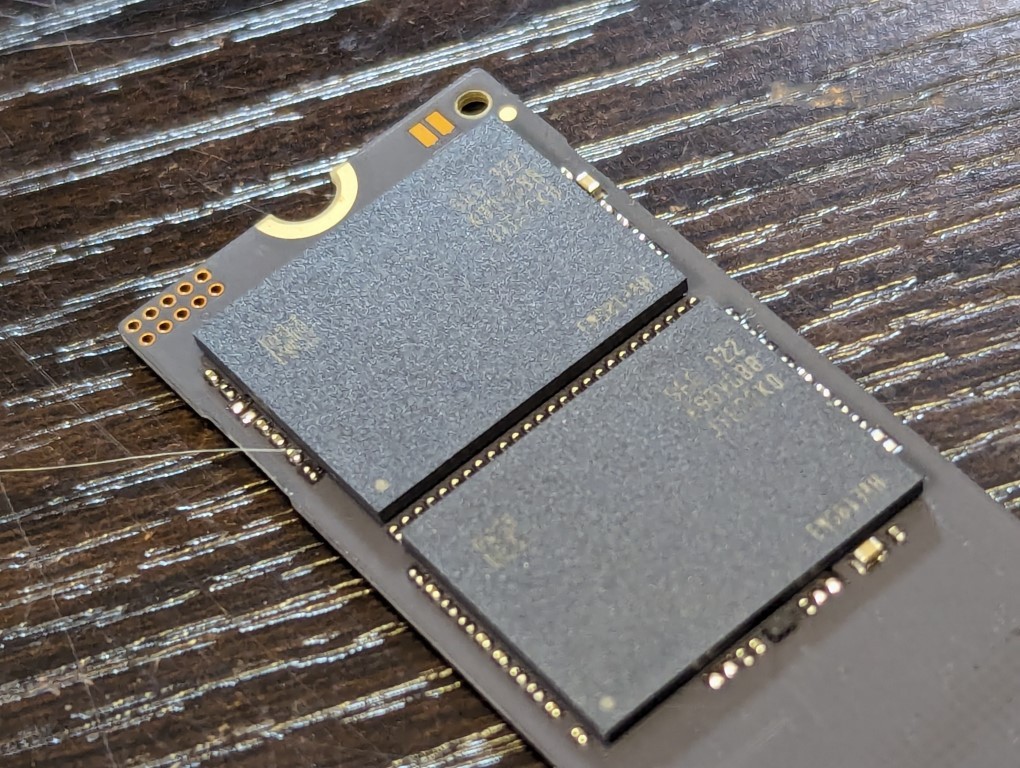
The storage NAND on the drive is another comparatively low bar compared with existing fully featured Gen 5 and Gen 4 SSDs in the market (including Samsung’s own 980 Pro and 990 Pro). The Samsung 990 EVO is a drive that has been targeted to replace/refresh the 970 EVO and in THAT regard, it is a substantial upgrade! With high bandwidth allocation, higher degrees of saturation of it in traditional throughput, higher 4K random IOPS, and just generally better thermal/power management when in operation, the 990 EVO is a confident upgrade over the 970 EVO indeed. However, there is still the question of buying the 990 EVO as a storage drive for your Gen 4 system (or even Gen 5 premium rig) when even Samsung’s 2020 released 980 Pro drive dominates the 2024 released 990 EVO in pretty much all areas and is even a similar/lower price in a lot of retailers.
| Samsung 990 EVO SSD | Samsung 990 Pro SSD |
 |
 |
The storage NAND is of a lower layer count but is still Samsung’s in-house 3D TLC V-NAND. This, the lack of onboard DRAM, and (in certain deployments) the x2 speed all add up to a drive that doesn’t stand especially tall against its competitors at a glance. Nevertheless, there is also the argument that the Samsung 990 EVO is going to be the best SSD that you never realize that you already own in years to come! Its design is ripe for deployment as the OS drive at the OEM/factory level in the same way as the widespread use of the 970 EVO was for Windows machines and laptops the world over! Indeed, in a different context, the specifications for the Samsung 990 EVO would make it a GREAT upgrade for a Steam Deck or one of its many clones in the last 12-18 months. If the Samsung 990 EVO was a 2230 or 2240 sized SSD, this review would be very different – as the market is crying out for high performing, yet power-efficient small form factor M.2 SSDs – however, the Samsung 990 EVO’s 2280 length eliminates this use sadly.

Additionally, the fact the SSD arrives at 1TB and 2TB, but not a 4TB, is going to disappoint users who are looking at this drive in terms of efficiency but also know that our daily data creation rates are bigger than ever! However, we cannot really use this as a stick to beat the 990 EVO with, as this could be part of a staged rollout and a 4TB version coming down the line (Samsung already provides numerous 4TB NVMe SSD examples in other ranges). All the mixed points so far aside, I have to hand it to Samsung for releasing this DRAMless SSD that supports Gen 4 and Gen 5 deployment – yet still maintains a standard 600/1200 TBW (so over 0.3 DWPD). Jargon aside, that means that this power and heat-efficient SSD can withstand up to over 300/600GB of daily write/rewrite on the 1/2TB respectively. Outside of SSD cache utilization in servers and as a daily backup drive without differentials, this SSD is going to last a LONG TIME and hopefully way, way beyond the 5yrs manufacturer’s hardware warranty (standard across the industry). There are still points to be made that the lower performance bears closer examination on these number’s virtues, but nonetheless, this still all adds up to good durability for a drive that is going to be used in compact deployments where heat generation is a real concern!

The hardware, in the right context, is all great. But inevitably, we are going to need to look at how this all adds up to performance. Let’s put the SSD through some benchmarks with popular test software, as well as discuss the Samsung Magician client software and how it allows you to use your 990 EVO beyond just traditional target storage.
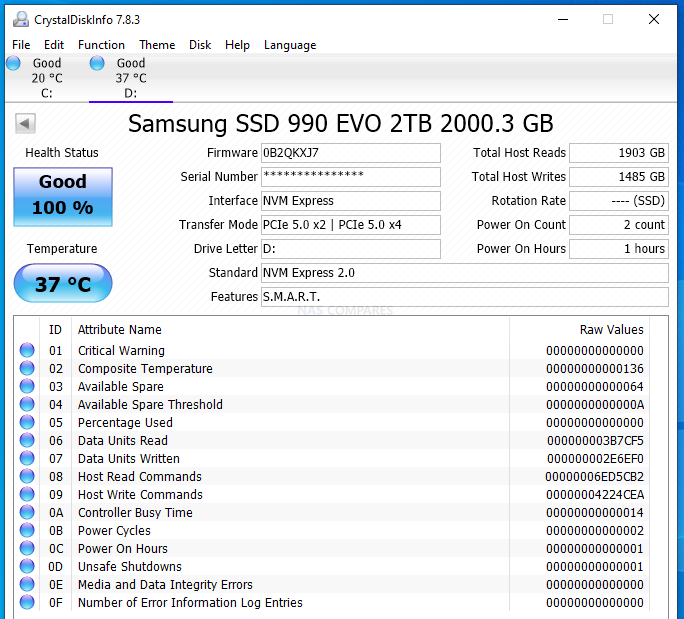
Using CrystalDisk, we got a good measure of the drive and verified that this PCIe Gen 5×2 / 4×4 SSD was indeed using the 5×2 lane. Additionally, the temp averaged out around 55C between each test being conducted and the highest temp registered for 68 degrees.
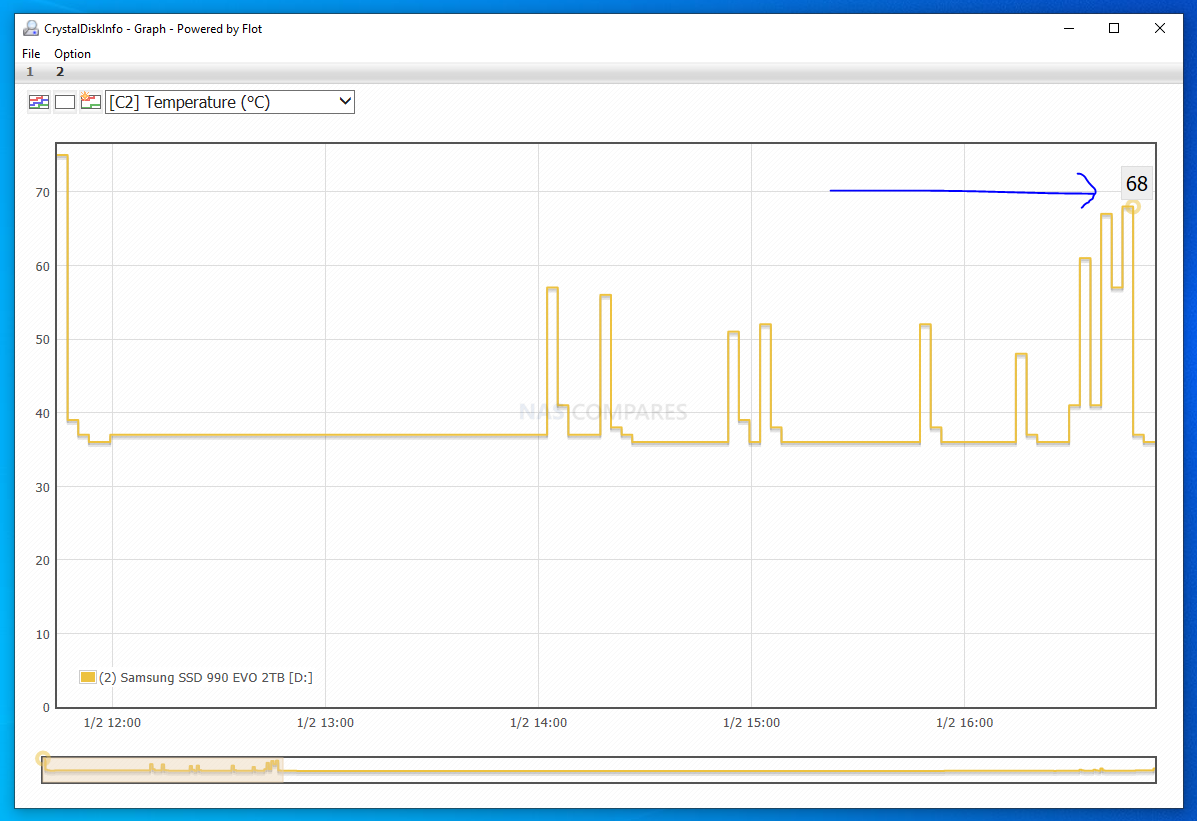
Samsung 990 EVO Gen 5 SSD Review – Performance and Software
It is REALLY important that we look at the performance of the Samsung 990 EVO SSD in the right frame of mind! We have reviewed A LOT of Gen 4 and Gen 5 SSDs here on NASCompares in the last few years, and we have to at least acknowledge that in terms of traditional throughput and responsive IOPS, the Samsung 990 EVO is going to come across lower in most cases. However, in the context of a DRAMLESS SSD and one that is designed towards more flexible deployment, we have more flexible thresholds in mind. Equally, Samsung has been very clear on the reported performance of the 990 EVO in their marketing, stating maximum performance numbers of 5000MB/s Seq Read and 4200MB/s Seq Write, as well as Read and Write 4K Random IOPS numbers of 800,000 and 700,000 respectively. These are good, healthy numbers and if sustained, would make this drive very attractive to those streamlined deployments. So, to the testing.
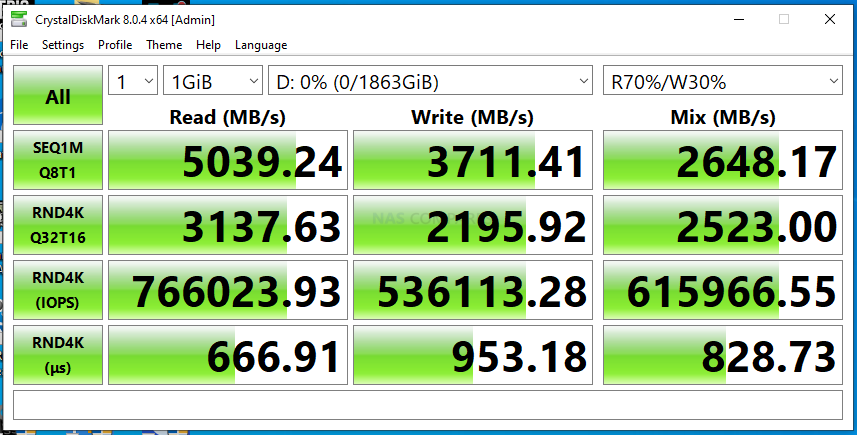
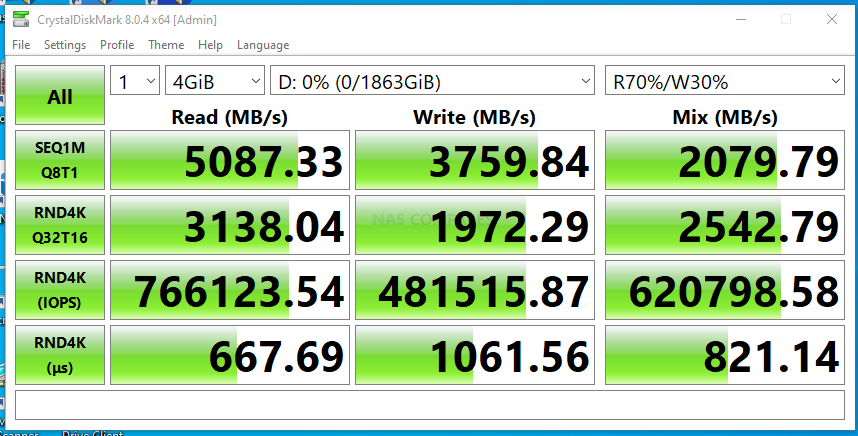
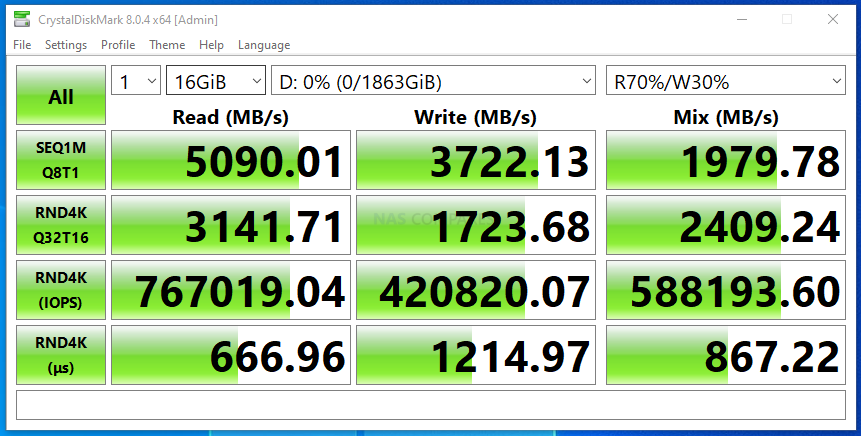
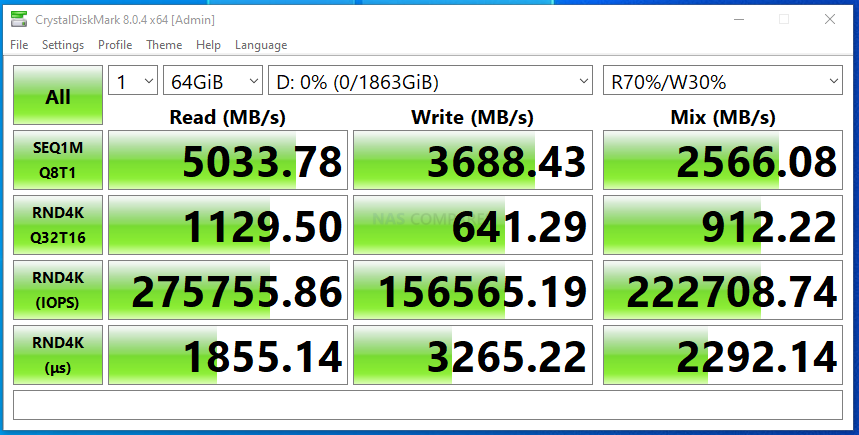
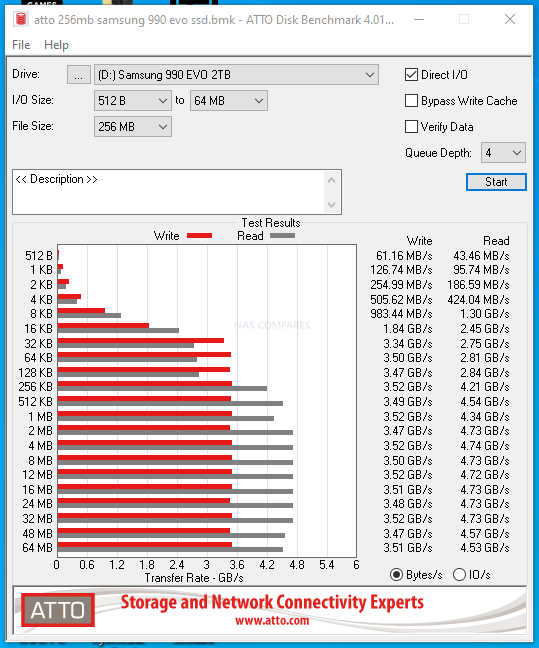 |
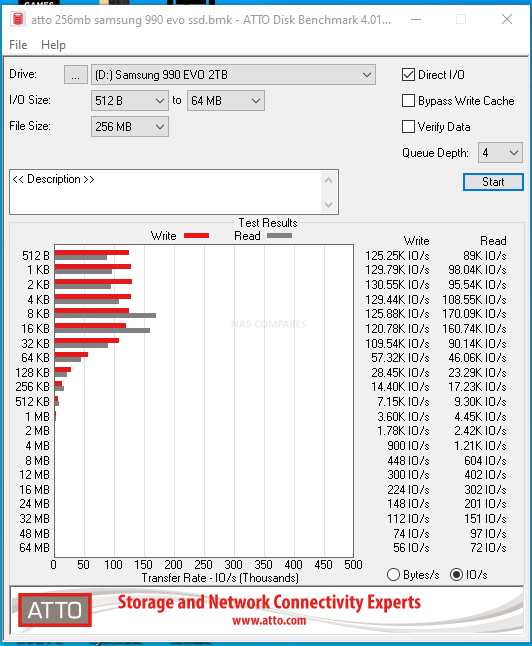 |
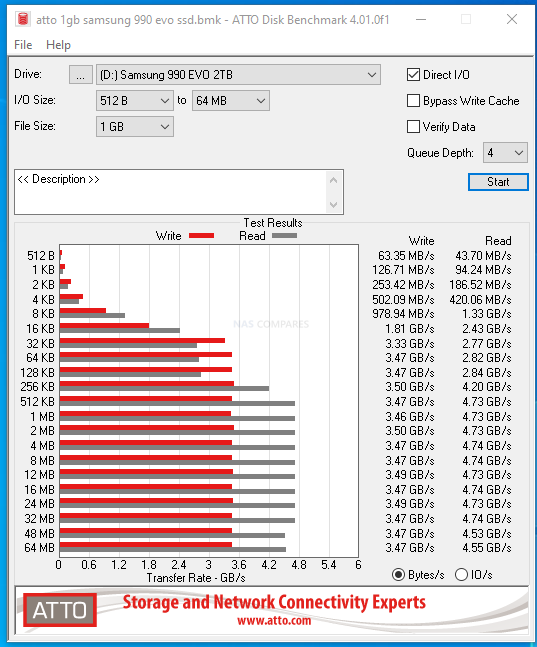 |
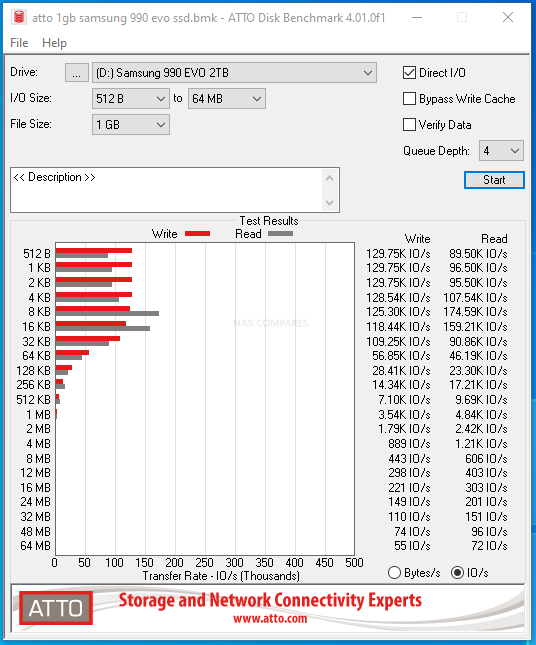 |
For the sake of fairness, let’s compare the results of the Samsung 990 EVO in some of its tests against the other DRAMless Gen 4 SSD we mentioned earlier in the review, the late 2022 released WD Black SN770, as then we have a much fairer means to frame the performance results:
| Samsung 990 EVO SSD | WD Black SN770 SSD |
 |
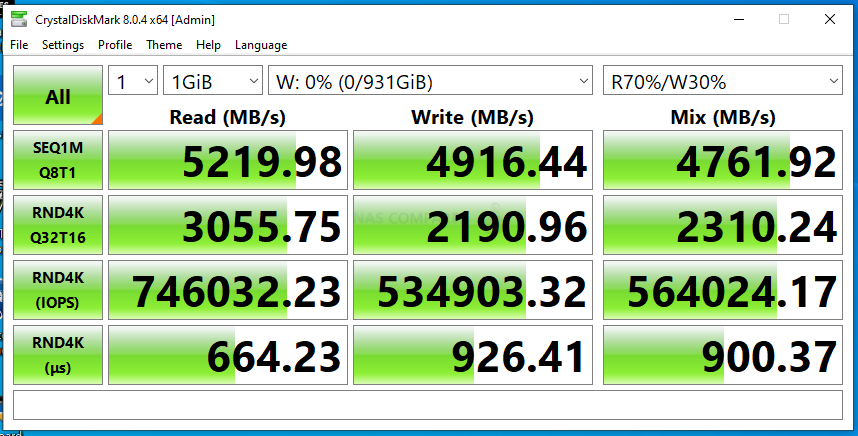 |
 |
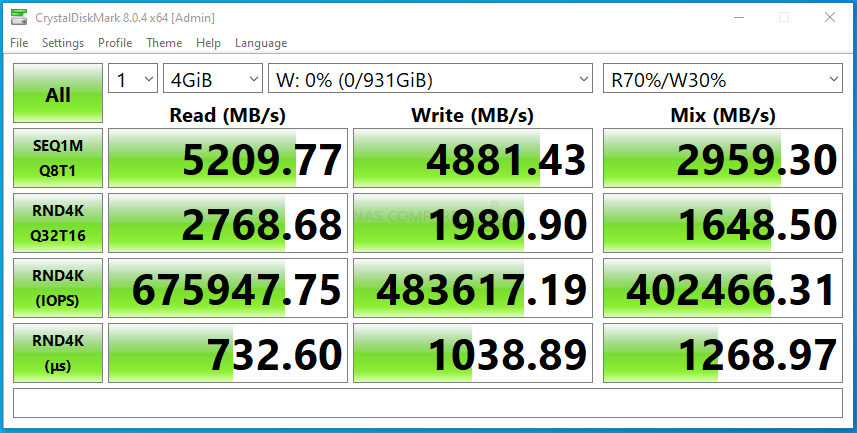 |
 |
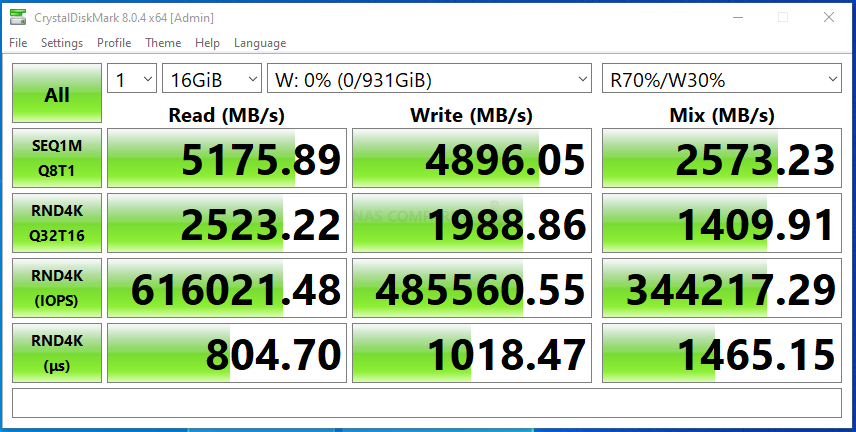 |
 |
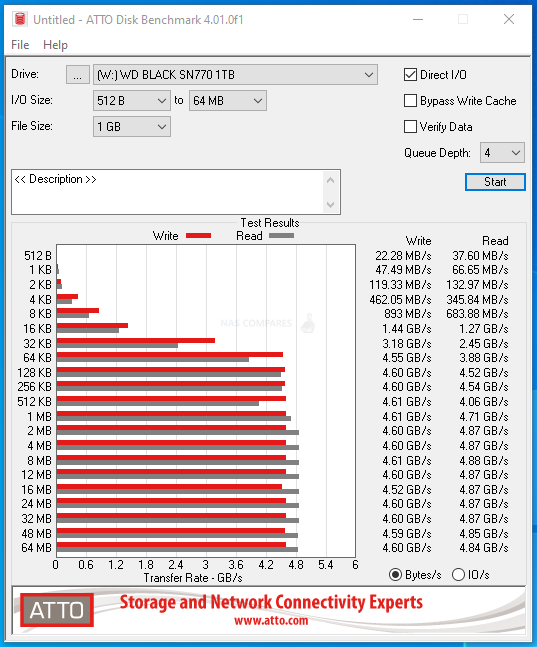 |
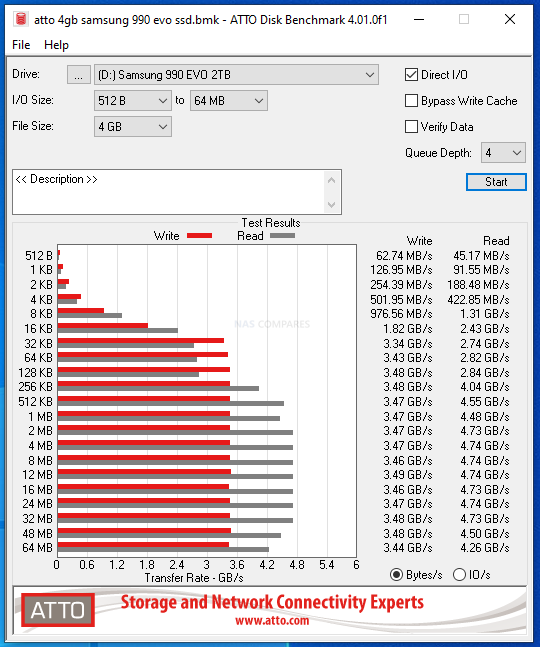 |
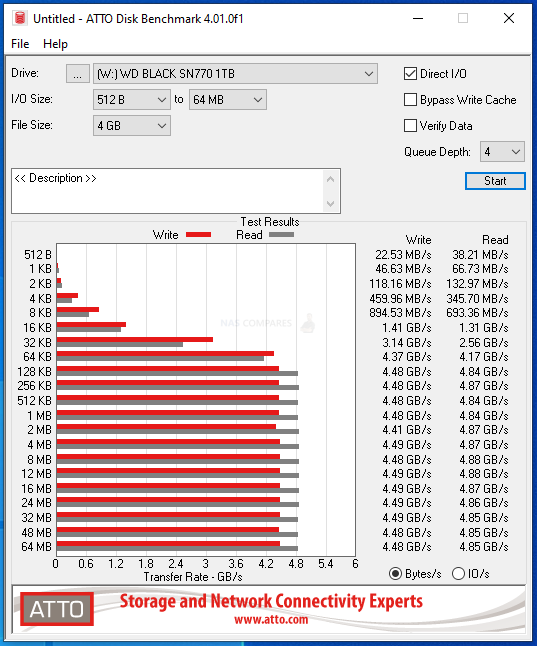 |
Although the numbers are comparable and there are gains/drops on either side, the winner is largely going to come down to your perspective of priorities. If traditional throughput of chunking MB/s and GB/s is your focus, the SN770 has the upper hand. But for IOPS, larger-scale databases of volume, and deployments made up of high-frequency data, the Samsung 990 EVO holds its ground the firmest. Let’s conclude this review.
Samsung 990 EVO Gen 5 SSD Review – Verdict
All this adds up to a drive that, in a very specific context of use in a powerful, yet curated/limited PCIe allocated system (with concerns of heat and power use), is ready to be a hero! Samsung is clearly banking on this being an established future trend, and you cannot really blame them. Alongside numerous examples of strategic PCIe allocation in modern consumer hardware throughout 2023 and planned for 2024, there are also still question marks about just what percentage of PCIe Gen 5 bandwidth can actually be saturated long term on modern PC architecture before the inevitable overfilling of cache and performance numbers plummeting. We have seen numerous examples using synthetic testing that has shown the first and second phase of Gen 5 releases reach anywhere from 20-60 seconds of sustained transfer before bottling down! This raises the idea of a drive that does have the ability to hit those highs, because it doesn’t need to, and instead can provide a sustained performance number that on balance works out better (not just in those more compact deployments too).

However, I think the first drive from Samsung into consumer Gen 5 SSDs being DRAMless is a little odd and would have been best served as a derivation/2nd wave of Gen 5 Samsung SSDs that allow choice – much like how WD released the WD Black SN850, then followed it up with the WD Black SN770 DRAMless Gen 4 alternative and the WD Black SN850X premium upgrade. Starting with the DRAMless 990 EVO and rolling out at the same time as their competitors are providing comparatively priced Gen 5×4 alternatives with higher transfers and IOPS ratings might be something of a marketing misstep. Only time will tell, and, as ever, storage trends are first and foremost going to follow client hardware trends (the PS5 exploded the Gen 4 generation in a way that PC Gaming hadn’t yet), and more affordable Power use SoC/Mobile Embedded versions of Intel/AMD chips led to massive uptake in Gen 4 higher cap drives. The Samsung 990 EVO is an SSD with acceptable performance, IOPS numbers, durability, and power use when it’s looked at in its own context/light, but draws weak comparisons with bigger and bolder drives in the market. Gamers and serious power users will want to look elsewhere, but if you are looking for an OS drive or base SSD for your next micro/compact system, you are going to find a reliable and long-term drive choice here.
| PROs of the Samsung 990 EVO SSD | CONs of the Samsung 990 EVO SSD |
| Low Power Use Low Heat Generation Ideal for Small Deployment Useful for Surgival/Careful PCIe Allocation Superior Bandwidth Use in x2 Situations Smasung Magician Still 10/10 Gen 5×4 SSDs Still Suffer Sustained Perf Issues Ideally suited for OS/OEM Level Drives Standard Durability, despite DRAMless design |
Better DRAMless Gen5 Controllers out there (Phison E31T) Lower traditional Performance/IOPS than most Gen 4/5 Comparable $ Drives Feels like a Steamdeck drive…but not! No 4TB Option |
Need More Help Choosing the Right Storage Solution?
Choosing the right data storage solution for your needs can be very intimidating and it’s never too late to ask for help. With options ranging from NAS to DAS, Thunderbolt to SAS and connecting everything up so you can access all your lovely data at the touch of a button can be a lot simpler than you think. If you want some tips, guidance or help with everything from compatibility to suitability of a solution for you, why not drop me a message below and I will get back to you as soon as possible with what you should go for, its suitability and the best place to get it. This service is designed without profit in mind and in order to help you with your data storage needs, so I will try to answer your questions as soon as possible.
📧 SUBSCRIBE TO OUR NEWSLETTER 🔔 This description contains links to Amazon. These links will take you to some of the products mentioned in today's content. As an Amazon Associate, I earn from qualifying purchases. Visit the NASCompares Deal Finder to find the best place to buy this device in your region, based on Service, Support and Reputation - Just Search for your NAS Drive in the Box Below
🔒 Join Inner Circle
Get an alert every time something gets added to this specific article!
Need Advice on Data Storage from an Expert?
Finally, for free advice about your setup, just leave a message in the comments below here at NASCompares.com and we will get back to you.
 Need Help?
Where possible (and where appropriate) please provide as much information about your requirements, as then I can arrange the best answer and solution to your needs. Do not worry about your e-mail address being required, it will NOT be used in a mailing list and will NOT be used in any way other than to respond to your enquiry.
Need Help?
Where possible (and where appropriate) please provide as much information about your requirements, as then I can arrange the best answer and solution to your needs. Do not worry about your e-mail address being required, it will NOT be used in a mailing list and will NOT be used in any way other than to respond to your enquiry.
TRY CHAT
Terms and Conditions


Minisforum MS-02 Ultra - WHO IS THIS FOR??? (The First 48HRs)
Why People Use TrueNAS, UnRAID and Proxmox to Turnkey NAS (Synology, QNAP, etc)
Why People Prefer Turnkey NAS vs TrueNAS, UnRAID and More
The Top 5 Mistakes NAS Buyers Make
Top 5 PLEX/Jellyfin NAS of 2025
Seagate Ironwolf vs WD Red NAS Hard Drives
Access content via Patreon or KO-FI
Discover more from NAS Compares
Subscribe to get the latest posts sent to your email.







DISCUSS with others your opinion about this subject.
ASK questions to NAS community
SHARE more details what you have found on this subject
IMPROVE this niche ecosystem, let us know what to change/fix on this site